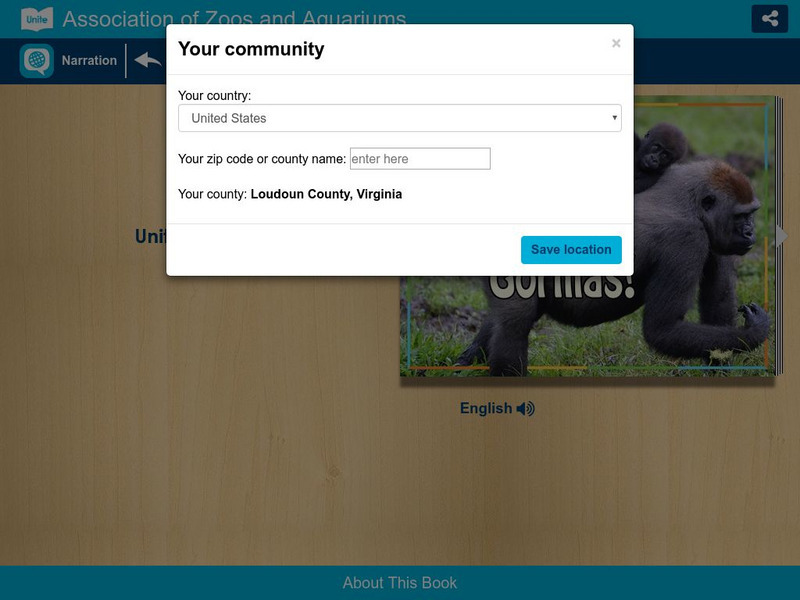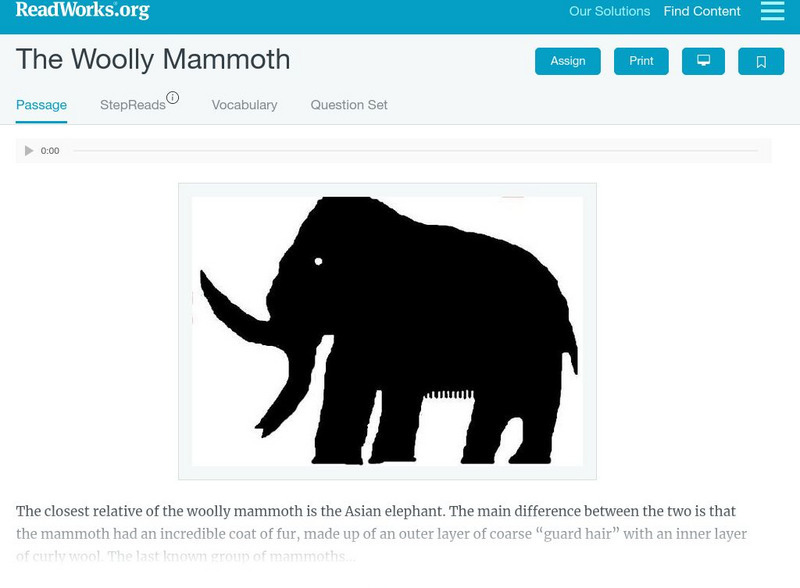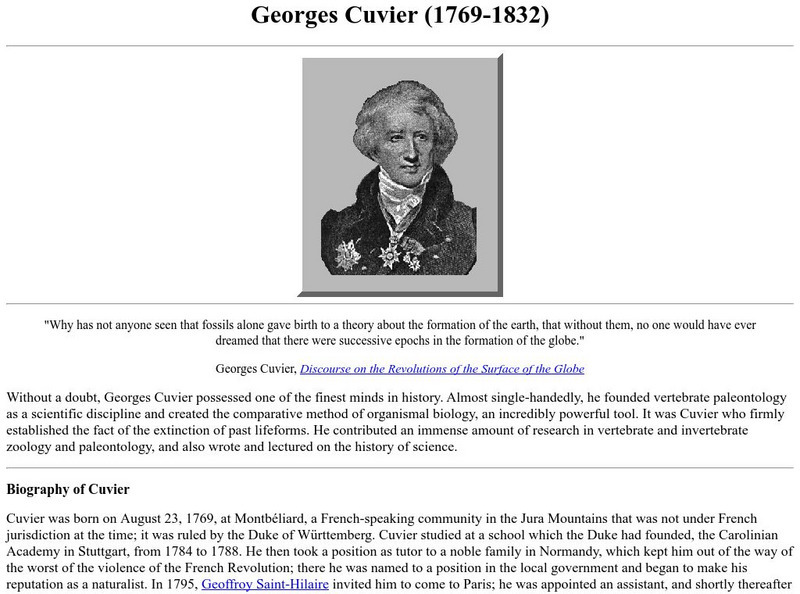Hi, what do you want to do?
Unite for Literacy
Unite for Literacy: Saving Animals From Extinction: Cheetah Highways
Learn some facts about cheetahs in this book. Includes audio narration in English and Spanish with text in English.
Unite for Literacy
Unite for Literacy: Saving Animals From Extinction: Sawfish
Learn some facts about sawfish in this book. Includes audio narration in English and Spanish with text in English.
Unite for Literacy
Unite for Literacy: Saving Animals From Extinction: The Black Rhinoceros
Learn some facts about the black rhinoceros, an endangered species, in this book. Includes audio narration in English and Spanish with text in English.
Unite for Literacy
Unite for Literacy: Saving Animals From Extinction: The Migrating Whooping Crane
Learn some facts about whooping cranes in this book. Includes audio narration in English and Spanish with text in English.
Unite for Literacy
Unite for Literacy: Saving Animals From Extinction: Good Day, Gorillas!
Learn some facts about gorillas in this book. Includes audio narration in English and Spanish with text in English.
Unite for Literacy
Unite for Literacy: Saving Animals From Extinction: The Best Turtle in the West
Learn some facts about the Western pond turtle in this book. Includes audio narration in English and Spanish with text in English.
Unite for Literacy
Unite for Literacy: Saving Animals From Extinction: A Nest for African Penguins
Learn some facts about the African penguin in this book. Includes audio narration in English and Spanish with text in English.
Unite for Literacy
Unite for Literacy: Saving Animals From Extinction: A Home for Elephants
Learn some facts about the Asian elephant in this book. Includes audio narration in English and Spanish with text in English.
Other
Catastrophism and Mass Extinctions
An overview of Walter and Luis Alverez's theory that a large meteorite crashed into earth causing huge tidal waves, showers of ash, and an enormous dust cloud.
Ducksters
Ducksters: Endangered Animals for Kids: How They Become Extinct
How do endangered species and animals become extinct? Hunting, pollution, loss of habitat, and introduced species all play a part and are discussed on this site.
Courseware Solutions
Wordville: Extinct Turtle Found
Read a short informational text called "Extinct Turtle Found," and then choose the correct answer for comprehension questions at the end of the selection.
PBS
Pbs Learning Media: What Killed the Dinosaurs?
This Evolution Web feature explores how evidence can support a variety of hypotheses surrounding the mystery behind the extinction of the dinosaurs.
Center for Educational Technologies
Earth Science Explorer: Dinosaur Floor
Take a tour of the dinosaur floor and you'll read several theories about why dinosaurs became extinct.
Lawrence Berkeley National Laboratory
Berkeley Lab: The Fruitful & Inventive Mind of Scientist Luis Alvarez
This article, reprinted from the fall 1979 LBL News Magazine, was written about Dr. Luis Alvarez and his part in the study of geological sediments and the great extinctions.
Indiana University
Indiana Univ. Bloomington: Geo Notes: Dinosaur Fossils Not Found in Indiana [Pdf]
Discusses the mass extinction event that wiped out many prehistoric animals 65 million years ago and why there are no dinosaur fossils to be found in Indiana.
Canadian Museum of Nature
Canadian Museum of Nature: Natural History Notebooks
A great reference source for a variety of vertebrate and invertebrate animals. This exhaustive resource also has some prehistoric extinct animals that students can compare to their living counterparts to increase their understanding of...
National Center for Ecological Analysis and Synthesis, University of California Santa Barbara
Kids Do Ecology: Endangered Species and Conservation Biology
Find out about conservation biology as it relates to endangered and threatened species. Learn about the factors contributing to the loss of species and what efforts have helped bring some animals back form the brink of extinction.
University of California
University of California: The Age of Mammals
This online chapter of a book studying biodiversity and conservation explores the evolution of mammals, from the extinction of the dinosaurs to the evolution of humans.
A-Z Animals
A Z Animals: Reference: Evolution
This entry identifies the defining characteritics of animal evolution, including adaptation, speciation, extinction, animal parternships and natural selection.
Read Works
Read Works: The Woolly Mammoth
[Free Registration/Login Required] An informational text about the woolly mammoth, their importance to humans during the Ice Age, and possible reasons why they became extinct. A question sheet is available to help students build skills...
University of Minnesota
University of Minnesota: Sea Otter
Analysis of the history of the sea otter in North America, focusing on its role in the European fur trade of the late 18th Century, this University of Minnesota web page is concise but thorough. The nations most involved in the...
Museums Victoria
Museum Victoria: Wild: Thylacine (Thylacinus Cynocephalus)
Information about Thylacines, also known as Tasmanian Tigers. They became extinct after 100 years of Europeans settling in Tasmania.
University of California
Ucmp: Georges Cuvier
This site from the University of California, Berkeley offers a biography of George Cuvier. Scientific ideas of George Cuvier are presented, such as those related to comparative anatomy, fossils, the idea of extinction, and others....
American Institute of Biological Sciences
Action Bioscience: Why Do We Need an Amphibian Ark?
Amphibians have a challenge to rise above and are unable to succeed without the help of a vision like Amphibian Ark. This program is viewed to be a global effort to protect amphibians from extinction and promote the benefits these life...
Other popular searches
- Dinosaurs and Extinction
- Dinosaur Extinction
- Animal and Plant Extinction
- 4th Grade Extinction
- Species Extinction
- Bird Extinction
- Mammoth Extinction
- Extinction of Organisms
- Fish Extinction
- Extinction Environment
- Dinosaur Extinction Theories
- Mass Extinction Time Line
























